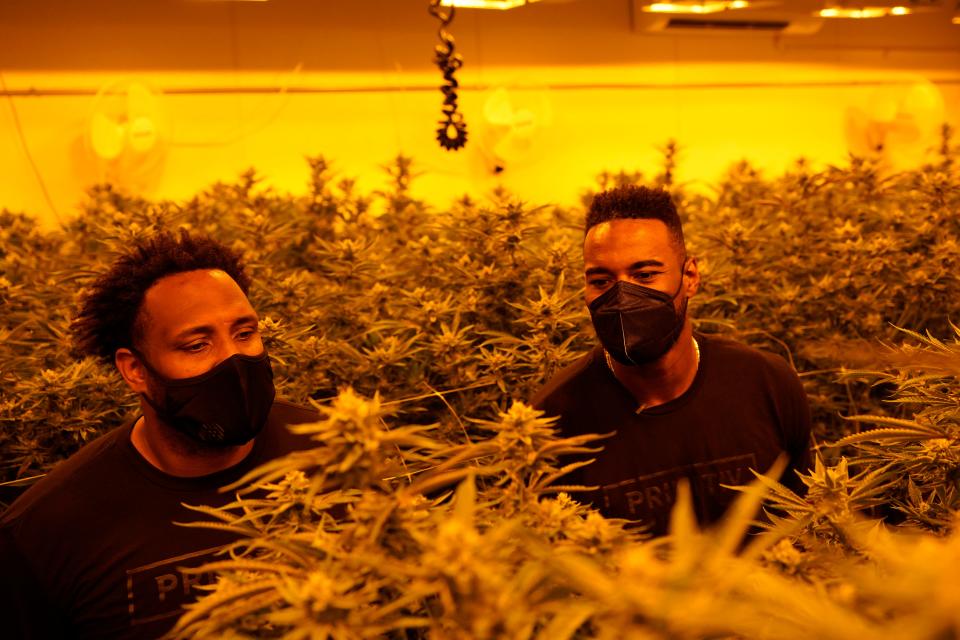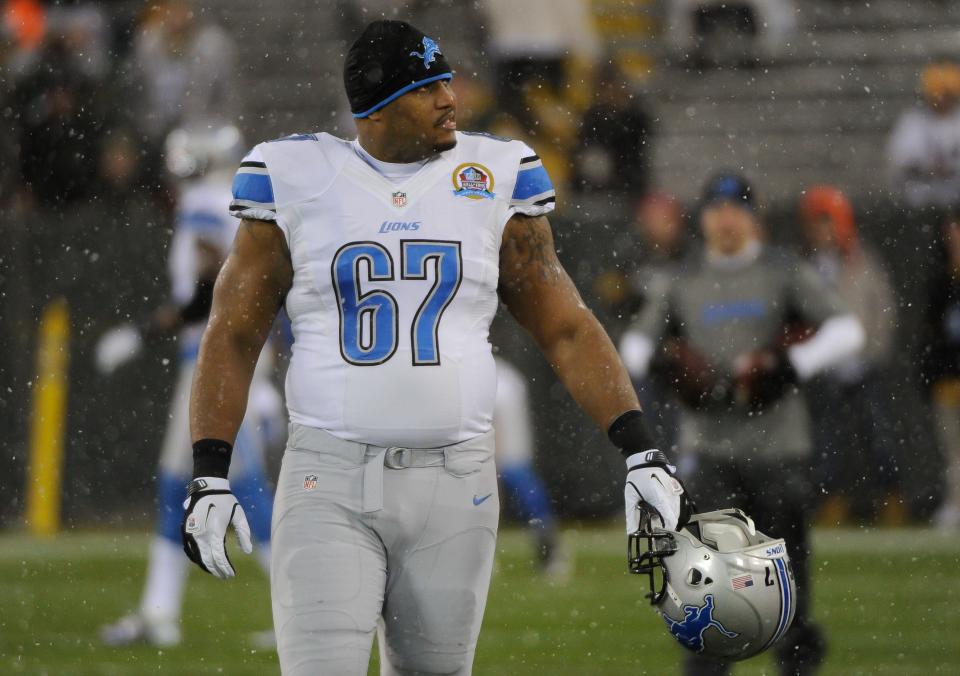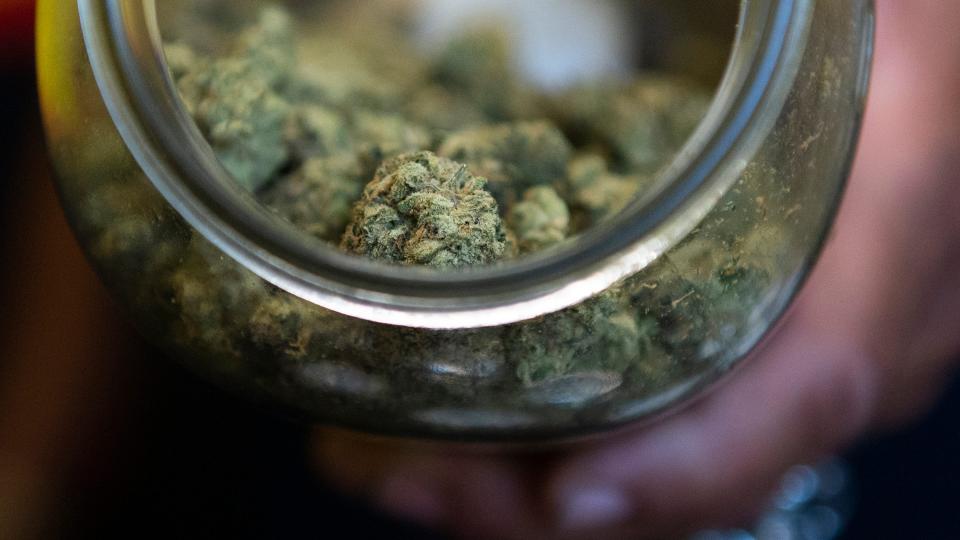Pot for pain relief? What cannabis can (and can’t) do for chronic pain.

Part 4 of a five-part USA TODAY series exploring chronic pain, the challenges of treatment and the scientific advances offering hope for the future.
Rob Sims grew up hearing stories about what opioid addiction could do. The former Detroit Lions guard, whose father, Mickey, also played in the NFL, watched a number of his dad's friends get hooked. Some died. He vowed his own story would be different.
Then, playing for the Seattle Seahawks in 2008, early in his pro football career, Sims tore a pectoralis muscle in his chest. Primed for his best year ever, Sims was sidelined.
After surgery, he received an open-ended prescription for opioids. "Take when you have pain," the bottle read. "That's seared in my memory," he said. As a football player, "I have pain all the time."
About this series
To better understand America’s pain problem, USA TODAY spoke with more than 50 experts and people living with chronic pain. The reporting resulted in America in Pain, a five-part series exploring the reality of pain, pain medications, nondrug alternatives and the scientific advances offering hope for the future.
Scared by the lesson he had learned as a child and with little to do besides focus on his recovery, he remembers thinking: "This could go in a bad way."
That's when he turned to marijuana.
It remains unclear whether cannabis can be an effective treatment for pain. Plenty of circumstantial evidence supports the idea, but exactly how, what kinds of products and what can be expected from them has yet to be determined.
"There's some caveats before it's ready for broad, prime-time usage for chronic pain," said Dr. Devan Kansagara, a professor of medicine at Oregon Health & Science University and a staff physician at the VA Portland.
It's possible that cannabis helps with the psychological aspects of pain, said Dr. Nora Volkow, head of the National Institute on Drug Abuse. "Cannabis may improve pain indirectly, for instance, through decreasing anxiety so that someone may be able to deal with pain better," she said.


One recent examination of previous studies found the benefits of cannabis were equal to the benefits of a placebo, which means that if people thought it would help, it did.
"There's very limited evidence out there to support that cannabis is effective against pain," said Karin Jensen, the Swedish neuroscientist who led the study. So far, most of the information showing its usefulness is anecdotal.
“People who use cannabis to relieve pain may have the experience that it helps – there is no doubt about that," she said. "What’s needed is solid scientific evidence to determine how much of the relief is due to the cannabis and how much is due to other things, such as the placebo effect.”
The general public is already largely convinced.
Marijuana remains illegal in 12 states, but as of 2019, 18% of U.S. adults reported using cannabis at least once in the previous year, and 4% to 5% use it daily or nearly daily, Kansagara said.
In a 2017 study, the majority of people who used medical marijuana or self-medicated with the drug said they did so to relieve pain, and 65% of those who requested medical marijuana licenses said they wanted it to treat pain.

But cannabis comes with cautions.
At least 5% of Americans ages 12 and up abuse or are dependent on marijuana, and the risk for dependence increases the younger someone starts. Marijuana use directly affects parts of the brain responsible for memory, learning, attention, decision-making, coordination, emotion and reaction time. And long-term or frequent marijuana use, particularly at higher doses, has been linked to increased risk of psychosis or schizophrenia.
It's not possible to predict ahead of time who will react badly to marijuana, said Dr. Charles Berde, co-founder of a pediatric pain clinic at Boston Children's Hospital.
THC, the part of the plant that has psychotropic effects, "has narrow uses for nausea and appetite stimulation in patients with severe weight loss due to AIDS or cancer," but the data for CBD for treatment of chronic pain is "murky," Berde said. "All the more reason to be hesitant to prescribe it."
Cannabis and pain relief
When a body is in pain, the brain releases its own pain relievers. There are special receptors in the brain designed to take in these natural cannabinoids and offer relief.
Ingesting or inhaling weed fills up those receptors, too.
Providing more cannabinoids than these receptors can accept overloads them making the person's own internal cannabinoids ineffective, said Dr. Jordan Tishler, a cannabis specialist physician in Cambridge, Massachusetts, and founder and president of the Association of Cannabinoid Specialists.
That's why higher doses don't provide any additional pain relief compared with lower ones and can have "all sorts of risks," he said. Side effects from cannabis can include increased heart rate, dizziness, impaired concentration and memory, slower reaction times and, more rarely, increased risk of heart attack and stroke and dependence.
Tishler said many patients come to him taking far too much cannabis, which increases the risk for side effects. He works to convince them that 5 mg to 20 mg a day will treat their pain better than the 200 mg they're using.

"Just because (cannabis) doesn't lead to breaking the law and incarceration and those sorts of troubles doesn't mean people can't have their lives significantly altered by getting overly involved with this particular substance," he said.
There are also open questions about cannabis, including whether the pain-killing benefits seen in short-term studies will last. Some painkillers, like opioids, can actually make people more sensitive to pain. It's not yet clear whether cannabis can have this effect.
"You'd like to see what happens with these products over a longer period of time, ideally," Kansagara said. "I would like to see that before recommending wholesale to patients."
Although legalization and decriminalization are making a difference, cannabis remains hard to study. Until recent years, it was extremely difficult to gain access to cannabis for research, and there was little federal funding for such work. In early December, President Joe Biden signed a law that will make it easier to research cannabis.

Gold-standard studies compare a treatment versus a placebo, but it's impossible to keep people in the dark about whether they're getting high, said Dr. Donald Abrams, an oncologist and professor emeritus at University of California, San Francisco, who studies cannabis.
When Abrams studied cannabis use in his HIV patients, some critics thought patients must be too stoned to notice their pain. But Abrams said the patients reported that it did alleviate their pain.
Dosages of cannabis aren't standardized, which adds to the difficulty of comparing one study against another, he said.

 Yahoo Autos
Yahoo Autos 